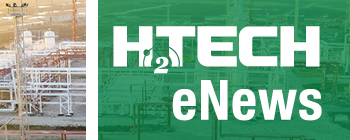News
DNV launches recommended practice for a common digital language in the energy sector
DNV has released DNV-RP-0670 Asset information modelling framework to improve asset information management in the energy sector. This recommended practice (RP) addresses challenges in engineering assets by enhancing information flow among organizations, individuals, and IT applications. It tackles issues caused by the lack of standardization and reliance on documents for information exchange.
The energy sector faces interoperability issues, information silos, limited reuse of concepts and designs, and application lock-in. These challenges lead to information loss, duplicated work, and manual mapping, increasing costs and inefficiencies.
“To achieve good digital interaction, both people and machines must speak the same language. In close collaboration with key industry players, DNV has developed an RP that enables more precise and efficient information exchange,” said Lillian Hella, DNV’s project manager for the RP.
“This language is used to create information models for equipment, systems, processes, and technical data. With increasing automation and artificial intelligence, this is more important than ever, and we believe the RP will support the sector’s transition.”
DNV-RP-0670 is designed for operators, facility owners, contractors, suppliers, and service providers. It promotes a shift from a document-driven to a data-driven approach, fostering collaboration and resource reuse. It also paves the way for services such as automatic verification and integrity control.
Aker BP, Aker Solutions, Aibel, Equinor, and the SIRIUS Centre at the University of Oslo contributed to the RP’s development. POSC Caesar Association (PCA), a global membership organization, will manage and publish the digital vocabulary.
“Common information models ensure different systems, applications, and companies can exchange data more efficiently,” said Lucy Craig, Senior Vice President, Growth, Innovation & Digitalization, Energy Systems at DNV.
“Standardization is key to reducing costs and increasing profitability. By implementing common models, the industry can save millions, improve data quality, and enable automatic compliance verification. This RP is a significant step toward better collaboration and information management, supporting the energy transition.”
A pilot on a major Norwegian continental shelf project showed that using a common digital language could reduce manual errors by at least 50% and save more than half a billion Norwegian kroner (approx. $45 MM).
“The RP is vital for the energy sector, and we are pleased that so many leading players have contributed,” said Helge Ferdinand Schjøtt, Business Analyst at Aker BP. “A common digital language enhances collaboration, ensures compliance with industry standards and regulations, and improves safety, decision-making, and efficiency. The standardized, scalable solution can also benefit other sectors.”

